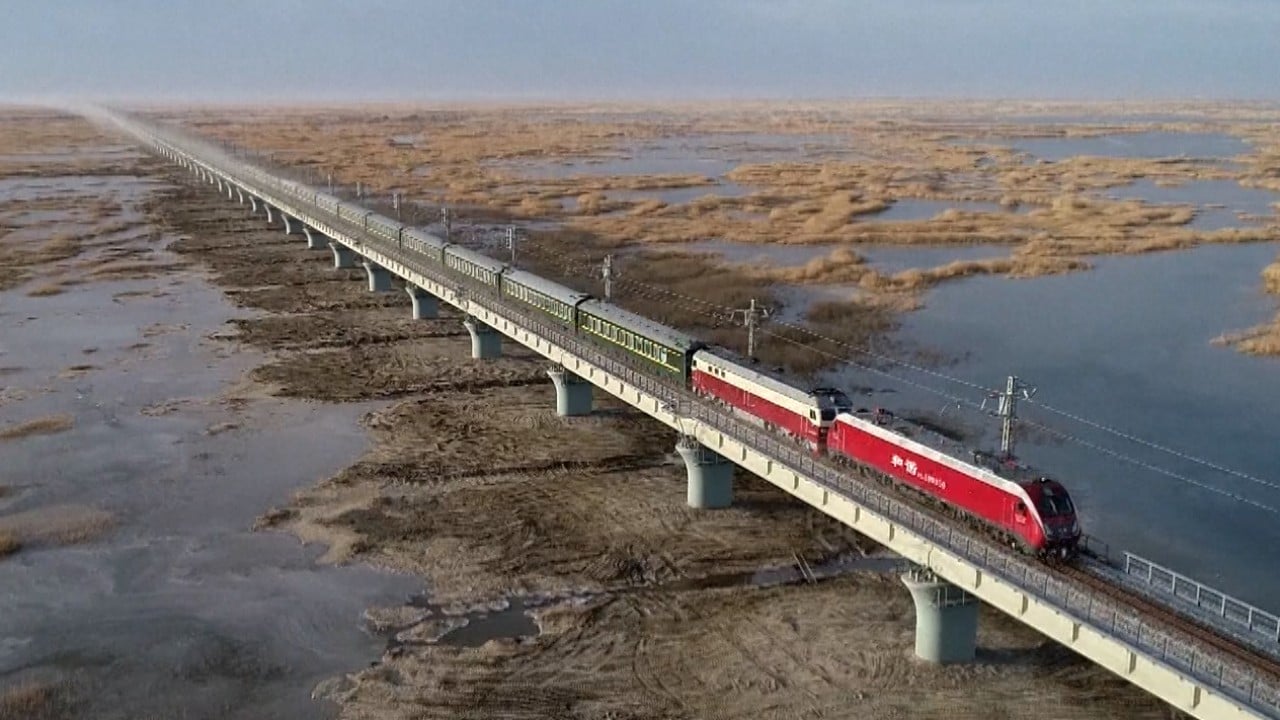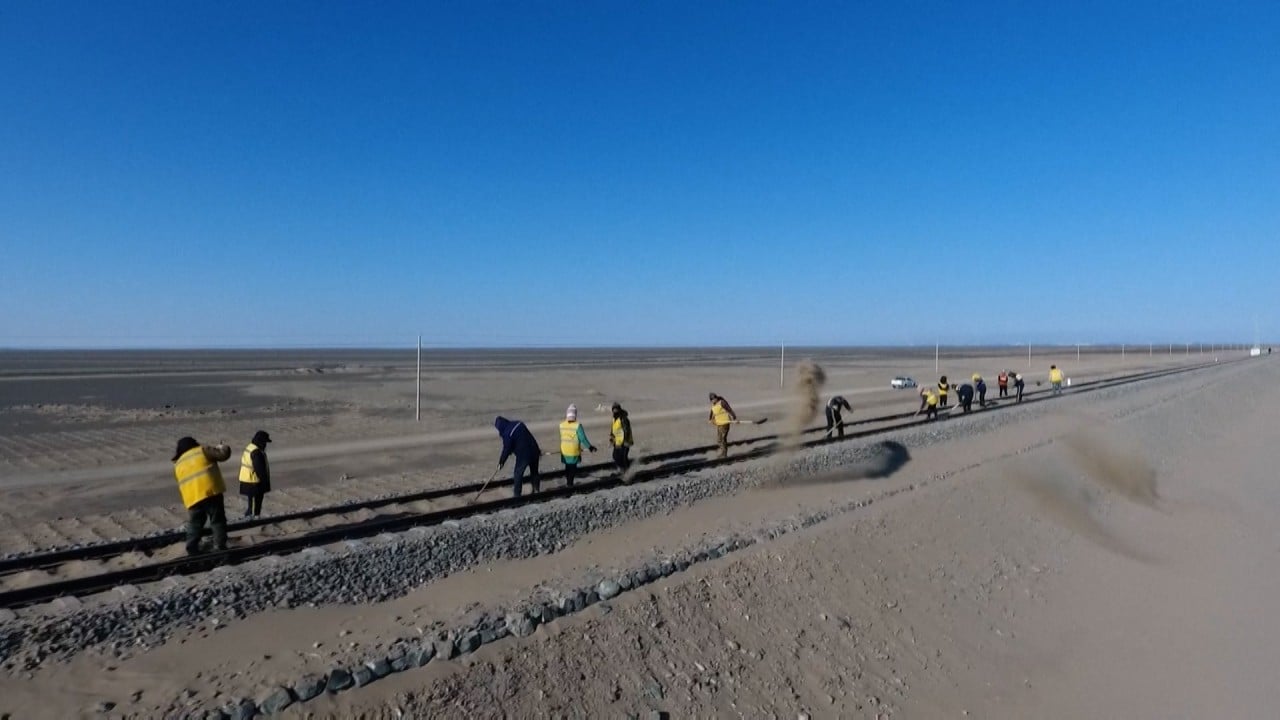
China’s top 5 infrastructure projects set to cost US$131 billion, but overall investment set to drop amid debt fears
- Last year, China turned to its old playbook to drum up growth amid the coronavirus outbreak by boosting investment spending on infrastructure projects
- But growing pressure on local government finances are among the reasons that the growth of infrastructure investment could slow
Deteriorating local government finances and concerns about mounting public debts are likely to result in China gradually curbing local government infrastructure projects this year, analysts said, although the top five approved last year are still set to cost close to 850 billion yuan (US$131.7 billion).
“Stabilising investment is the key to stabilising economic growth, and the growth of local government debt is critical to infrastructure investment,” said the National Institution for Finance & Development (NFID), a government-linked think tank, who released the data about China’s debt level.
“Infrastructure investment for the whole year of 2020 increased by 3.41 percentage points more than the growth rate of nominal GDP, but its stimulus effect was limited compared to the scale of debt expansion. The increase in debt growth and the slowdown in economic growth have jointly raised the level of leverage.”

01:28
China builds over 4,000km of railway in 2020
Growing pressure on local government finances are among the reasons that the growth of infrastructure investment could slow further, with analysts expecting Beijing to reduce the limit for local authorities to issue special purpose bonds to fund projects.
China has not yet announced whether it will front-load its local government bond quota this year, as it has for the last two years, to accelerate infrastructure investment.
We think this may suggest a revised policy stance towards a lower reliance on special bonds to support infrastructure investment so as to ease financial pressure on the government’s fund account
Local governments in China sold a total of 3.6 trillion yuan (US$558 billion) worth of special purpose bonds last year, against a quota of 3.75 trillion yuan, with Fitch Ratings expecting the remaining quota to be carried over into 2021.
“The special bond quota for 2021 is yet to be announced, unlike the practice adopted in 2019 and 2020, where the quota was front-loaded in the previous year to maintain investment activity. We think this may suggest a revised policy stance towards a lower reliance on special bonds to support infrastructure investment so as to ease financial pressure on the government’s fund account,” Fitch said in a research report last week.
Investment in the top 15 projects is projected to be 1.21 trillion yuan, with two adjusted underground railway plans for Shenzhen and Fuzhou set to cost 86.49 billion yuan and 16.83 billion yuan, respectively.
We believe that the growth rate of fixed asset investment can reflect the debt pressure of a region to a certain extent and its future economic growth prospects
“We believe that the growth rate of fixed asset investment can reflect the debt pressure of a region to a certain extent and its future economic growth prospects. For regions where the growth rate [of fixed asset investment] has fallen sharply, one should be cautious when it comes to choosing their debt for investment,” said Zhongtai Securities.
Fixed asset investment in Hubei, the initial epicentre of the coronavirus outbreak last year, recorded the deepest plunge among China’s provinces in 2020, falling 18.8 per cent, a decrease of 29.4 per cent compared with 2019.

01:38
China unveils state-of-the-art maglev train prototype designed to travel at 620km/h
Zhongtai Securities research showed fixed asset investment last year also fell in the provinces of Qinghai, Tianjin, Inner Mongolia, Fujian and Guangxi.
Nevertheless, a number of local governments signed up to new high-cost infrastructure projects last year, and we review the top five by expected investment approved by the NDRC, with a total expected investment of 849.3 billion yuan (US$131.7 billion).
1. Greater Bay Area transport networks (US$73.5 billion)
With an initial price tag of 474.1 billion yuan (US$73.5 billion), the project includes a high-speed railway and urban transit network that seeks to connect Hong Kong, Macau, Guangzhou, Shenzhen, Zhuhai, Foshan, Zhongshan, Dongguan, Huizhou, Jiangmen and Zhaoqing.
The network will cover 4,700km within Guangdong province by 2025, connecting the key cities of Guangzhou and Shenzhen.
Investment in the transport network within the Greater Bay Area is aimed at ensuring two hour journey times to inland-level cities in Guangdong province, and three hour journey times from the major cities in Guangdong to capitals of neighbouring provinces.

01:18
Construction of mega bridge in southwestern China completed
2. Jinan urban transit network (US$17.9 billion)
The eastern Chinese province of Shandong will spend 115.4 billion yuan (US$17.9 billion) from 2020 to 2025 to complete the second phase of its underground rail network in its capital city of Jinan.
The network will cover 604.8km, connecting 11 cities in Shandong, and will offer better links with major railway stations in Jinan and with its airport.
3. Ningbo urban transit network (US$13.6 billion)
Ningbo, the port city of the industrial hub in eastern China’s Zhejiang province, has been given approval to develop the third phase of its underground rail network from 2021 to 2026, covering 413.3km.
The expected investment amount is 87.59 billion yuan (US$13.6 billion).

01:26
Chinese workers on mission to ensure safety of desert railway
4. Beijing and Xiongan high-speed railway (US$13.5 billion)
The planned high-speed railway network is designed to connect the new city of Xiongan in the northern province of Hebei to the capital city of Beijing, as well as Shandong province.
The rail line will cover 552.5km, with 14 stops, with an expected investment of 87.11 billion yuan (US$13.5 billion).
Xiongan, which is located around two hours by road from Beijing, is in the early stage of becoming a new metropolis after President Xi Jinping personally picked the site in April 2017 to form a “city of the future”.
Many central government departments are set to be relocated to Xiongan to reduce congestion in Beijing, with its main railway station opening last year.
5. Chengdu-Dazhou-Wanzhou high-speed railway (US$13.2 billion)
The newly proposed high-speed railway will connect Chengdu, the capital of southwestern China’s Sichuan province, to the cities of Dazhou and Wanzhou to boost connections in the Yangtze River Delta area.
The network will cover 486.4km and is projected to cost 85.1 billion yuan (US$13.2 billion).

